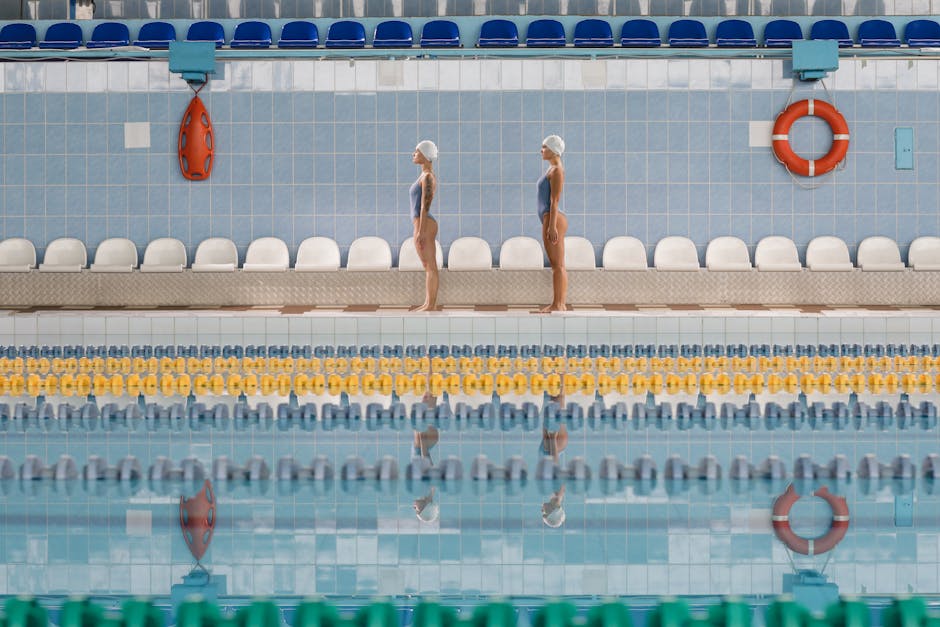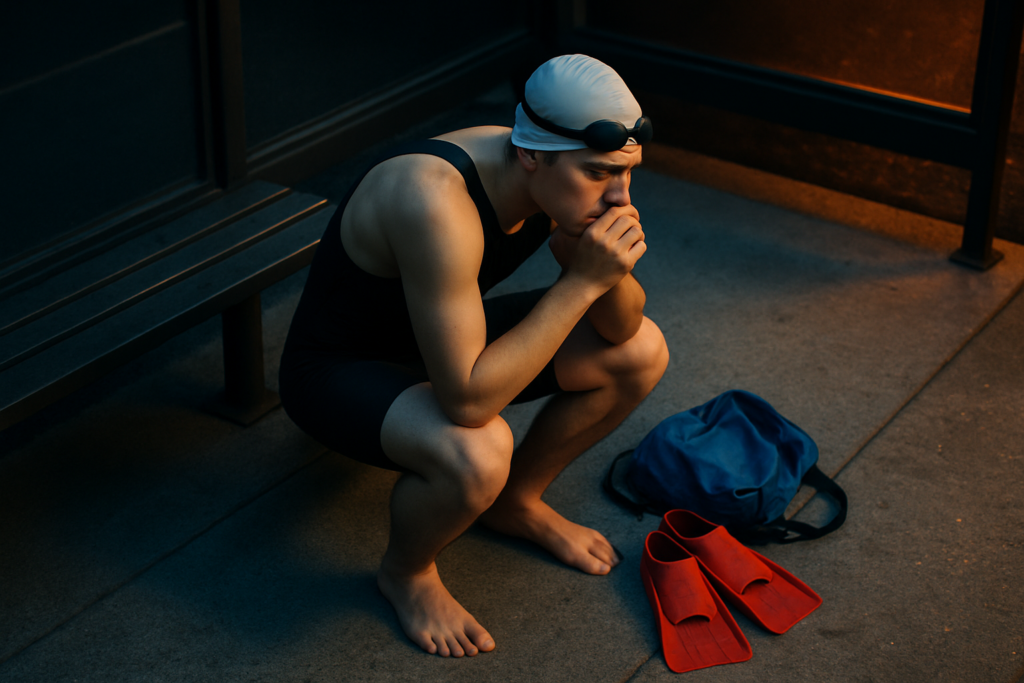As a competitive swimmer, setting clear and achievable goals is key to unlocking your full potential in the pool. In this article, I’ll guide you through the art of goal setting for swimmers and how it can propel you towards peak performance. Whether you’re aiming to shave seconds off your personal best or striving for podium finishes, having well-defined goals can be the difference between swimming and swimming with purpose.
I’ll share practical tips on setting specific, measurable, attainable, relevant, and time-bound (SMART) goals tailored to the unique demands of competitive swimming. By honing in on what you want to achieve and mapping out a roadmap to get there, you’ll not only enhance your performance but also cultivate a winning mindset. Join me as we dive into the world of goal setting for swimmers and pave the way for success in the water.
Understanding the Importance of Goal Setting for Swimmers
Setting clear and achievable goals plays a pivotal role in maximizing the potential of competitive swimmers. By defining specific objectives, swimmers can propel themselves towards peak performance, whether it involves surpassing personal best times or clinching podium finishes. Let’s delve into the significance of goal setting in the realm of competitive swimming.
The Role of Goals in Swimming Performance
In the realm of swimming, goals serve as guiding beacons that direct athletes towards success. They provide a clear roadmap for swimmers, outlining the steps needed to reach their full potential in the water. By setting goals related to technique refinement, speed enhancement, or endurance building, swimmers can systematically improve their performance and inch closer to their desired outcomes. Goals in swimming act as catalysts for motivation, focus, and consistency, driving athletes to push their boundaries and excel in the pool.
Psychological Benefits of Setting Goals
Beyond the physical aspect, setting goals in swimming offers profound psychological advantages. It instills a sense of purpose and direction in athletes, fostering a mindset geared towards continuous improvement and achievement. By establishing goals that are challenging yet attainable, swimmers experience a boost in confidence and self-efficacy, enhancing their belief in their capabilities. Moreover, the act of setting and striving towards goals cultivates resilience, determination, and mental toughness, equipping swimmers with the psychological tools necessary to overcome obstacles and thrive under pressure.
Types of Goals for Swimmers

When setting goals for swimmers, it’s essential to consider both short-term and long-term objectives to ensure continuous improvement in performance. Short-term goals are those that can be achieved in the near future, such as improving stroke technique or increasing endurance within a few weeks. On the other hand, long-term goals focus on broader achievements over a more extended period, like qualifying for a major competition or breaking a personal record at the end of a season.
- Short-Term vs. Long-Term Goals
Short-term goals provide swimmers with immediate targets to work towards, keeping them motivated and engaged in their training sessions. These goals are instrumental in breaking down larger aspirations into manageable steps, allowing athletes to track their progress effectively. In contrast, long-term goals give swimmers a sense of direction and purpose, guiding their training and competition preparations over an extended period. By combining short-term wins with long-term ambitions, swimmers can maintain momentum and stay committed to their development journey. - Performance, Process, and Outcome Goals
Performance goals in swimming are centered around achieving specific results, such as reducing lap times or increasing stroke efficiency. These goals focus on the overall performance improvement and set measurable targets for swimmers to strive towards. Process goals, on the other hand, emphasize the actions and behaviors necessary to achieve desired outcomes. This could include aspects like consistent attendance at training sessions, focusing on technique drills, or implementing recovery routines effectively. Outcome goals define the end results that swimmers aim to accomplish, such as winning a race or securing a spot on the podium. By incorporating a mix of performance, process, and outcome goals, swimmers can enhance their overall performance and maintain a balanced approach to goal setting.
Setting Achievable Goals
Setting goals is crucial for swimmers to reach their full potential in the pool. Achieving peak performance requires a strategic approach to goal setting that aligns with individual capabilities and aspirations. Let’s explore the SMART goal framework and common mistakes to avoid in setting goals effectively.
SMART Goal Framework
In swimming, employing the SMART goal framework is essential for setting goals that are Specific, Measurable, Achievable, Relevant, and Time-bound. When I set goals using the SMART criteria, I ensure they are clear and precise, measurable to track progress, realistic within my current abilities, relevant to my overall objectives, and time-bound to create a sense of urgency.
Common Mistakes in Goal Setting
Avoiding common pitfalls in goal setting can ultimately lead to improved performance and personal growth. Some common mistakes swimmers should steer clear of include setting vague goals without clear objectives, aiming too high or too low, neglecting to track progress regularly, and failing to adjust goals based on performance feedback. By sidestepping these errors, swimmers can enhance their goal-setting process and propel themselves closer to achieving peak performance in the pool.
Tools and Techniques for Goal Tracking
When it comes to tracking goals in swimming, utilizing swim logbooks and apps can be highly beneficial. Swim logbooks provide a structured way to monitor performance metrics, record training sessions, and track progress over time. These logbooks typically include sections for detailing workouts, setting goals, and reflecting on achievements. Similarly, various swimming apps offer digital solutions for goal setting and tracking, allowing swimmers to input data, analyze performance trends, and receive feedback on their progress.
Swim Logbooks and Apps
Incorporating swim logbooks into your routine can be a game-changer. These logbooks serve as valuable tools for swimmers to organize their training schedules, set specific objectives, and evaluate their development. By consistently updating a swim logbook, individuals can identify patterns, assess strengths and weaknesses, and make informed adjustments to their training plans. Moreover, the convenience of utilizing swimming apps enables athletes to access their data anywhere, receive real-time insights, and stay motivated through interactive features and goal reminders.
The Role of Coaches and Mentors
Coaches and mentors play a pivotal role in goal tracking and achievement. Engaging with a coach can provide swimmers with expert guidance, personalized feedback, and strategic planning to align goals with performance outcomes. Coaches offer valuable insights based on their experience and knowledge, adapting training regimes to individual needs and fostering a supportive environment for goal pursuit. Likewise, mentors contribute to the goal-setting process by offering motivation, encouragement, and accountability, helping swimmers stay focused and committed to their objectives.


 is a seasoned fitness expert with a special focus on swimming and holistic health strategies. With years of experience as a competitive swimmer and fitness coach, Patricia offers readers a wealth of knowledge on optimizing performance and maintaining a balanced lifestyle. Her writing on Swim Fast Stay Fit reflects her commitment to empowering others with practical advice and motivational insights. Patricia’s approach integrates advanced training techniques with accessible wellness tips, aiming to help individuals achieve their personal fitness goals and enhance their overall quality of life. Through her engaging articles, Patricia inspires readers to embrace a comprehensive approach to health, combining effective exercise routines with mindful nutrition and self-care practices.
is a seasoned fitness expert with a special focus on swimming and holistic health strategies. With years of experience as a competitive swimmer and fitness coach, Patricia offers readers a wealth of knowledge on optimizing performance and maintaining a balanced lifestyle. Her writing on Swim Fast Stay Fit reflects her commitment to empowering others with practical advice and motivational insights. Patricia’s approach integrates advanced training techniques with accessible wellness tips, aiming to help individuals achieve their personal fitness goals and enhance their overall quality of life. Through her engaging articles, Patricia inspires readers to embrace a comprehensive approach to health, combining effective exercise routines with mindful nutrition and self-care practices.
